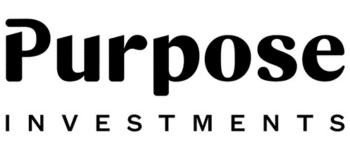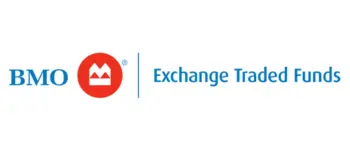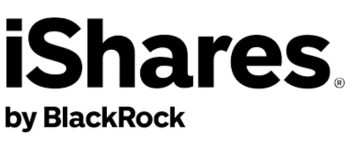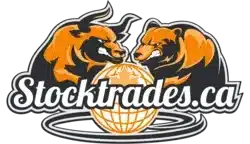Earn Juicy Yields on Your Savings With These Money Market ETFs
Key takeaways
Safety & Liquidity – These ETFs invest in cash equivalents like high-interest savings accounts and short-term government T-bills, making them a safe and liquid option for parking cash.
Yield Considerations – Returns depend on prevailing interest rates, with higher rates boosting yields but also increasing competition from other fixed-income options.
Fee Sensitivity – Most of these funds have ultra-low expense ratios, but even small differences in fees can impact net yields over time.
One ETF I like way better than the ones on this list.Canadians are really getting into money market funds lately. Many folks are looking to keep their money safe while still making a bit of extra cash from their savings.
In the situation we’re in right now with higher policy rates, they’re even more popular. Although rates are coming down, they’re still well above pre-pandemic levels.
These funds offer stability, high yields, and liquidity, making them attractive to investors with a low-risk tolerance or those in need of a short-term investment vehicle.
Consumers are now starting to find out they can earn more outside of the high-interest savings account at their bank. As a result, they are seeking out low-risk, high-yielding opportunities.
Although money market funds typically provide lower returns than other particular investments, their safety and accessibility make them an essential addition to a well-diversified portfolio.
This article will explore the best money market funds available in Canada. However, I do want to go over one thing first.
The confusion with money market funds in Canada
Many investors tend to confuse the term money market fund with possibly a HISA ETF.
A money market fund is an ETF or mutual fund that invests in cash or cash equivalents and often short-term debt securities. HISA ETFs, on the other hand, invest in institutional-grade savings accounts.
Although they are structured to be entirely cash and highly liquid, I wouldn’t classify them as a money market fund.
However, I feel you could be on this page because you’re looking for those HISA ETFs. They’ve exploded in popularity. So, I’m going to list them here anyway, along with a combination of treasury bill ETFs.
What are the best money market ETFs in Canada right now?
- Purpose High-Interest Savings Fund (TSE:PSA)
- Horizons Cash Maximizer ETF (TSE:HSAV)
- Horizons High-Interest Savings ETF (TSE:CASH)
- CI High-Interest Savings ETF (TSE:CSAV)
- BMO Money Market Fund ETF Series (TSE:ZMMK)
- iShares Premium Money Market ETF Comm (TSE:CMR)
- Horizons 0-3 Month T-Bill ETF CAD (TSE:CBIL)
- Horizons 0-3 Month U.S. T-Bill ETF (TSE:UBIL.U)
High-yield savings ETF with bank diversification
Purpose High-Interest Savings Fund (TSE:PSA)

PSA invests in high-interest savings accounts from multiple Canadian banks, providing a low-risk way to earn interest income. It’s designed for capital preservation while offering competitive yields.
No distributions, maximizing compounding
Global X Cash Maximizer Corporate Class ETF (TSE:HSAV)

HSAV reinvests interest income rather than distributing it, making it tax-efficient for non-registered accounts. It tracks bank HISA rates while avoiding monthly distributions.
Popular HISA-based ETF with stable returns
Horizons High-Interest Savings ETF (TSE:CASH)

CASH invests in high-yield savings accounts at major banks, offering a stable yield with low risk. Monthly distributions make it ideal for income-seeking investors.
Bank savings ETF with competitive rates
CI High-Interest Savings ETF (TSE:CSAV)

Similar to CASH and PSA, CSAV holds deposits in high-interest savings accounts across Canadian banks. It offers monthly distributions and a stable return profile.
Traditional money market fund with T-bill exposure
BMO Money Market Fund ETF Series (TSE:ZMMK)

ZMMK invests in a mix of high-interest savings accounts and ultra-short-term government securities (like T-bills). This provides stability while still capturing yield opportunities.
Broad-based short-term money market exposure
iShares Premium Money Market ETF Comm (TSE:CMR)

CMR is a money market ETF that invests in a mix of government and corporate money market instruments, balancing risk and return while maintaining high liquidity.
Government-backed ultra-short-term exposure
Global X 0-3 Month T-Bill ETF CAD (TSE:CBIL)

CBIL holds ultra-short-term Canadian government T-bills, making it one of the safest money market ETFs in Canada.
USD-denominated ultra-short-term option
Global X 0-3 Month U.S. T-Bill ETF (TSE:UBIL.U)

UBIL.U is a U.S. T-bill ETF, offering exposure to USD cash yields with minimal credit risk.
Understanding money market funds
Money market funds are a type of mutual fund that invests in short-term debt securities and cash equivalents. These funds aim to provide investors with a steady stream of interest income and preserve the capital invested.
Money market funds are often considered a safe, low-risk investment option due to their focus on high-quality, short-term assets and their liquidity.
Investors looking for a relatively safe investment with a modest yield may find money market funds appealing. These funds typically invest in assets such as government and corporate debt, certificates of deposit (CDs), commercial paper, and Guaranteed Investment Certificates, among other money market instruments.
The short-term nature of these investments helps to minimize the risk of capital loss and maintain a stable net asset value (NAV).
One of the key benefits of money market funds is their liquidity. Due to the short-term nature of their investments, these funds can quickly buy and sell assets, making them an attractive option for investors looking to park their cash for a short period or maintain a liquid emergency fund.
This is in stark contrast to some other investments, which may require a longer time horizon or may have higher transaction costs.
In terms of returns, money market funds generally offer lower overall returns than riskier investments, such as stocks or long-term bonds. However, their return potential is higher than simply holding cash in a savings account.
The interest income generated by the fund’s assets is typically distributed to investors regularly, either monthly or quarterly.
While money market funds are considered relatively safe, investors should still be aware of the associated risks. For instance, there is still the potential for minimal capital loss if the value of the short-term debt securities the fund holds decreases.


